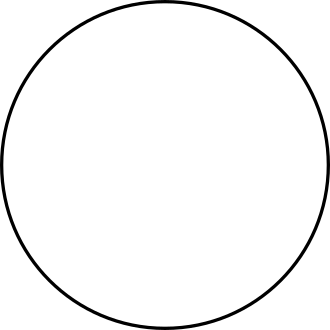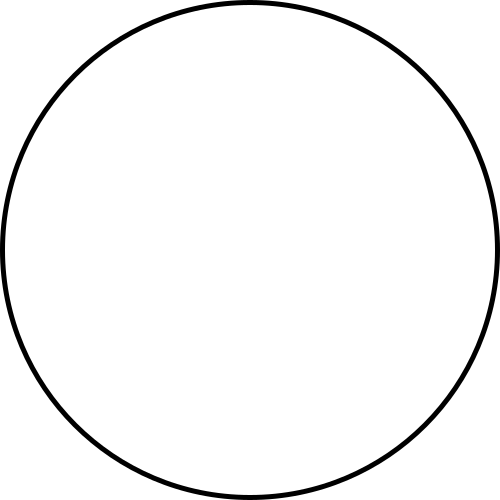Módulo:Chart/doc
Esta es la página de documentación de Módulo:Chart
Module Chart exports two functions: bar chart and pie chart
- Note - Template:Graph:Chart is an alternative template, that may be more suitable for your use case.
Drawing Bar charts: "bar chart"
Parameters
| parameter name | what it does |
|---|---|
| delimiter | string to delimit multiple values when given. default to colon ( : ). normally you do not want to touch this, it's provided for the off-chance you'll want to use colon as part of one of the parameters. |
| width | number. if provided, must be at least 200. default: 500 |
| height | number. if provided, must be at least 200. default: 350 |
| group n | (where "n" is a number. use "group 1", "group 2" etc. for as many groups as there are in the graph) the values to be charted. see below. |
| tooltip n | tooltip to be associated with specific bar. If no tooltip for a specific bar is defined, and this bar has a link, then this link will be used as tooltip. Otherwise, the tooltip will be combined from the group name and the value, optionally with "units prefix" and "units suffix". |
| links n | links to articles to be associated with specific bar |
| stack | whether to stack the different groups on top of each other. do not specify to show bars side by side. Any non-empty value means "yes". To say "no", simply do not supply this parameter at all, or leave the value blank. |
| tooltip value accumulation | useful only with stack: when set to true, tooltip will show accumulated value of all blocks up to current one |
| colors | the colors used to denote the various groups. should have exactly as many values as # of groups. can be given as standard html-recognized color names, or using #xxx or #xxxxxx notation. |
| x legends | The legends for the X values. Wikicode, such as internal links or templates can be used. |
| hide group legends | if set to true, group legends will not be shown below chart. Any non-empty value means "yes". To say "no", simply do not supply this parameter at all, or leave the value blank. |
| scale per group | set to use separate Y- scale for each group. leave empty to use one scale for all groups. incompatible with "stack". Note that even if some of the scales are exactly the same, they will be drawn separately when this setting is on. Any non-empty value means "yes". To say "no", simply do not supply this parameter at all, or leave the value blank. |
| units prefix | used in tooltip. e.g., $, so values will show as "$500" instead of "500" in the tooltip |
| units suffix | ditto for units suffix. use, e.g. "Kg" so values will show as 88Kg instead of 88 in tooltip. underscore ("_") are replaced by spaces, to allow a space between the value and the suffix. |
| group names | names of different groups |
| y tick marks | number of tick marks on the y axis. if the value is negative or omitted, the module will attempt to automatically calculate a sensible number of tick marks. |
Examples
Basic
{{ #invoke:Chart | bar chart
| group 1 = 40 : 50 : 60 : 20
| group 2 = 20 : 60 : 12 : 44
| group 3 = 55 : 14 : 33 : 5
| links 1 = Apple : McCintosh : Golden delicious
| links 2 = Banana : Apricot : Peach
| links 3 = Orange : Pear : Bear
| tooltip 2 = tooltip 1 : tooltip 2 : tooltip 3 : tooltip 4
| colors = green : yellow : orange
| group names = Apple : Banana : Orange
| x legends = Before : During : After : Post mortem
}}
- Apple
- Banana
- Orange
Stacked
Here is the same graph, with more modest height and width, using "stack", and adding "units suffix" for good measure:
{{ #invoke:Chart | bar chart
| height = 250
| width = 300
| stack = 1
| group 1 = 40 : 50 : 60 : 20
| group 2 = 20 : 60 : 12 : 44
| group 3 = 55 : 14 : 33 : 5
| colors = green : yellow : orange
| group names = Apple : Banana : Orange
| units suffix = Kg
| x legends = Before : During : After : Post mortem
}}
- Apple
- Banana
- Orange
Scale per group
This option has been disabled. It was rarely used and broke in the last code update. Here is an example with large number of groups - mainly to test how it looks with large number of legends:
{{ #invoke:Chart | bar chart
| width = 800
| height = 550
| group 1 = 1:2:3:4:5:4:3:2:1
| group 2 = 1:2:3:4:5:4:3:2:1
| group 3 = 1:2:3:4:5:4:3:2:1
| group 4 = 1:2:3:4:5:4:3:2:1
| group 5 = 1:2:3:4:5:4:3:2:1
| group 6 = 1:2:3:4:5:4:3:2:1
| group 7 = 1:2:3:4:5:4:3:2:1
| group 8 = 1:2:3:4:5:4:3:2:1
| group 9 = 1:2:3:4:5:4:3:2:1
| group 10 = 1:2:3:4:5:4:3:2:1
| group 11 = 1:2:3:4:5:4:3:2:1
| group 12 = 1:2:3:4:5:4:3:2:1
| group 13 = 1:2:3:4:5:4:3:2:1
| group 14 = 1:2:3:4:5:4:3:2:1
| group 15 = 1:2:3:4:5:4:3:2:1
| group 16 = 1:2:3:4:5:4:3:2:1
| group 17 = 1:2:3:4:5:4:3:2:1
| group 18 = 1:2:3:4:5:4:3:2:1
| group 19 = 1:2:3:4:5:4:3:2:1
| group 20 = 1:2:3:4:5:4:3:2:1
| group 21 = 1:2:3:4:5:4:3:2:1
| colors = Silver:Gray:Black:Red:Maroon:Yellow:Olive:Lime:Green:Aqua:Teal:Blue:Navy:Fuchsia:Purple:ForestGreen:Tomato:LightSeaGreen:RosyBrown:DarkOliveGreen:MediumVioletRed
| group names = Alabama:Alaska:Arizona:Arkansas:California:Colorado:Connecticut:Delaware:Florida:Georgia:Hawaii:Idaho:Illinois:Indiana:Iowa:Kansas:Kentucky:Louisiana:Maine:Maryland:Massachusetts
| x legends = 1920 : 1930 : 1940: 1950 : 1960 : 1970 : 1990 : 2000 : 2010
| units prefix = $
| units suffix = _billion
| stack = 1
}}
- Alabama
- Alaska
- Arizona
- Arkansas
- California
- Colorado
- Connecticut
- Delaware
- Florida
- Georgia
- Hawaii
- Idaho
- Illinois
- Indiana
- Iowa
- Kansas
- Kentucky
- Louisiana
- Maine
- Maryland
- Massachusetts
If there are many values, x legends can be diluted by using delimiters with nothing in between:
{{ #invoke:Chart | bar chart
| group 1 = 1:2:3:4:5:6:7:8:9:10:11:12:13:14:15:16:17:18:19:20:21:22:23:24:25:26:27:28:29:30
:31:32:33:34:35:36:37:38:39:40:41:42:43:44:45:46:47:48:49:50:51:52:53:54:55:56:57:58:59
| units suffix = _Things
| group names = Some
| x legends = ::::1940::::::::::1950::::::::::1960::::::::::1970::::::::::1980::::::::::1990::::
}}
Drawing Pie charts: "pie chart"
Parameters
| parameter name | what it does |
|---|---|
| delimiter | string to delimit multiple values when given. default to colon ( : ). normally you do not want to touch this, it's provided for the off-chance you'll want to use colon as part of one of the parameters. |
| radius | number. The radius of the pie in pixels |
| slices | Tuples, in parenthesis. Use delimiter inside the tuple:
( Value1 : Name1 : Color1 : Link1 ) ( Value2 : Name2 : Color2 : Link2 ) ... The values are numbers. The numbers can be integers or decimal fractions, or using the scientific notation: 7.24e6, 7,240,000, or 7240000.00 are all acceptable for 7 Million and 240 thousands. Names are strings. Colors are optional. you can use any Web colors, such as "red" or "#FF0000". Up to 26 default colors are defined, but if your pie has more than 26 slices, you must define the colors of slice #27 and up. Links can be external or internal links, including linking to internal anchors and paragraphs in the same article, like so: [[Article|Tooltip]] for internal link, [[#Paragraph name|Tooltip]] for linking to an anchor in same article, or [http://example.org Tooltip] for external link. |
| slice n | alternative syntax to "slices". n is the slice number, beginning with 1. make sure not to skip: if you define "slice 1", "slice 2", "slice 4", "slice 5"..., skipping slice 3, only the first two slices will be shown. this syntax is incompatible with "slices", i.e., they should not be used in conjunction in the same invocation. Using both "slices" and "slice n" in the same invocation will cause unpredictable results. The value is like a single "tuple" as explained above, but without the parenthesis:
| slice 1 = Value1 : Name1 : Color1 : Link1 | slice 2 = Value2 : Name2 : Color2 : Link2 | ... This syntax allows you to use parenthesis in names, links, and colors. |
| percent | if used, the percentage of each slice will be calculated and added to the legend: so if you have two slices, like so: ( 1 : Younglings ) ( 3 : elders ), and use define "percent", the legends will become "Younglings: 1 (25%)" and "Elders: 3 (75%)", instead of simply "Younglings: 1" and "Elders: 3". Any non-empty value means "yes". To say "no", simply do not supply this parameter at all, or leave the value blank. |
| units prefix | used in the legend. e.g., defining "units prefix=$", values will show as "$500" instead of "500" in the legends |
| units suffix | ditto for units suffix. use, e.g. "Kg" so values will show as 88Kg instead of 88 in legend. underscore ("_") are replaced by spaces, to allow a space between the value and the suffix. |
| hide group legends | Setting to true prevents displaying of the group legends under the chart. Any non-empty value means "yes". To say "no", simply do not supply this parameter at all, or leave the value blank. |
Examples
- Apples: 1 000 000 Tonne (19.7%)
- Bananas: 2 000 000 Tonne (39.4%)
- Apricots: 1 440 000 Tonne (28.3%)
- Pears: 640 000 Tonne (12.6%)
- Pineapples: 750 Tonne (0.0%)
- Apples: 1 000 000 Tonne (19.7%)
- Bananas: 2 000 000 Tonne (39.4%)
- Apricots: 1 440 000 Tonne (28.3%)
- Pears: 640 000 Tonne (12.6%)
- Pineapples: 750 Tonne (0.0%)
- 1: 1 Units (0.2%)
- 7: 7 Units (1.5%)
- 8: 8 Units (1.7%)
- 9: 9 Units (1.9%)
- 10: 10 Units (2.1%)
- 11: 11 Units (2.3%)
- 12: 12 Units (2.5%)
- 13: 13 Units (2.7%)
- 14: 14 Units (2.9%)
- 15: 15 Units (3.2%)
- 16: 16 Units (3.4%)
- 17: 17 Units (3.6%)
- 18: 18 Units (3.8%)
- 19: 19 Units (4.0%)
- 20: 20 Units (4.2%)
- 21: 21 Units (4.4%)
- 22: 22 Units (4.6%)
- 23: 23 Units (4.8%)
- 24: 24 Units (5.0%)
- 25: 25 Units (5.3%)
- 26: 26 Units (5.5%)
- 27: 27 Units (5.7%)
- 28: 28 Units (5.9%)
- 29: 29 Units (6.1%)
- 30: 30 Units (6.3%)
- 31: 31 Units (6.5%)
- 1: 1 Units (0.2%)
- 7: 7 Units (1.5%)
- 8: 8 Units (1.7%)
- 9: 9 Units (1.9%)
- 10: 10 Units (2.1%)
- 11: 11 Units (2.3%)
- 12: 12 Units (2.5%)
- 13: 13 Units (2.7%)
- 14: 14 Units (2.9%)
- 15: 15 Units (3.2%)
- 16: 16 Units (3.4%)
- 17: 17 Units (3.6%)
- 18: 18 Units (3.8%)
- 19: 19 Units (4.0%)
- 20: 20 Units (4.2%)
- 21: 21 Units (4.4%)
- 22: 22 Units (4.6%)
- 23: 23 Units (4.8%)
- 24: 24 Units (5.0%)
- 25: 25 Units (5.3%)
- 26: 26 Units (5.5%)
- 27: 27 Units (5.7%)
- 28: 28 Units (5.9%)
- 29: 29 Units (6.1%)
- 30: 30 Units (6.3%)
- 31: 31 Units (6.5%)


